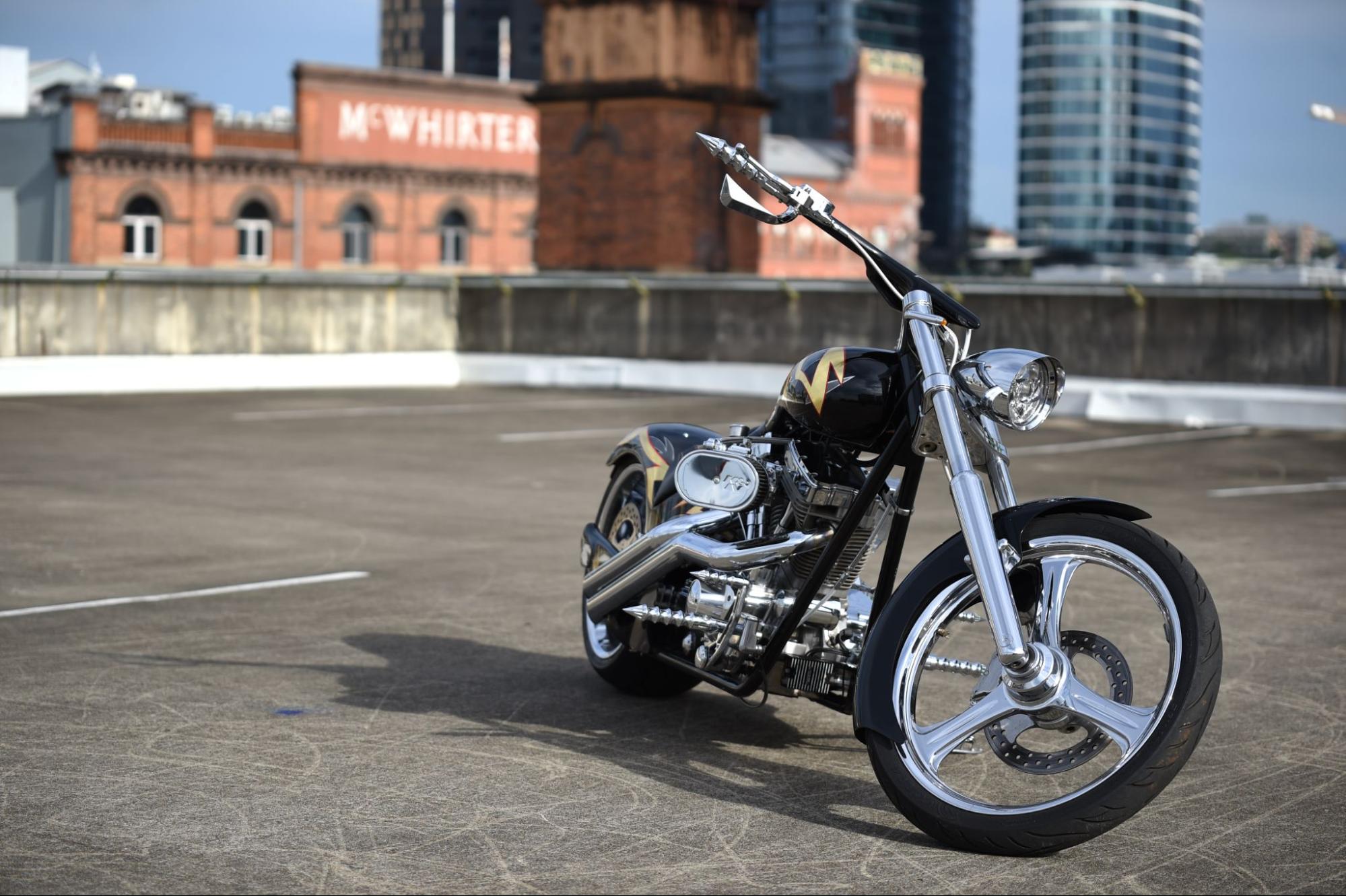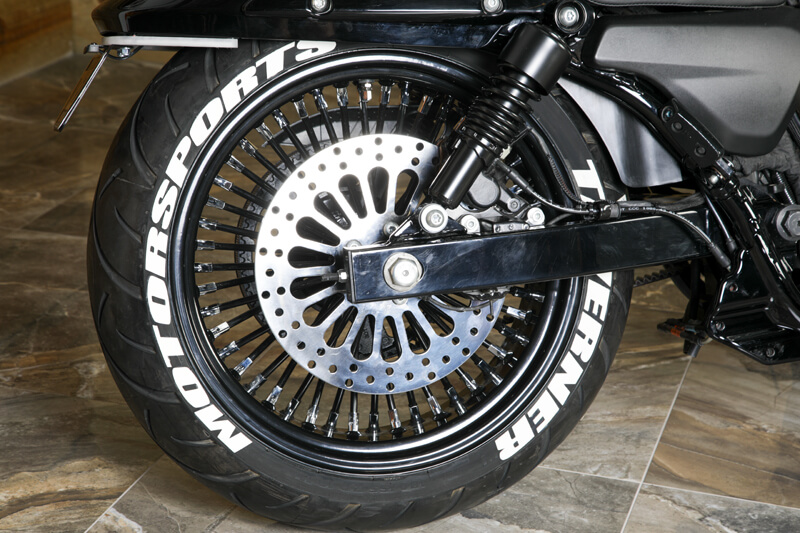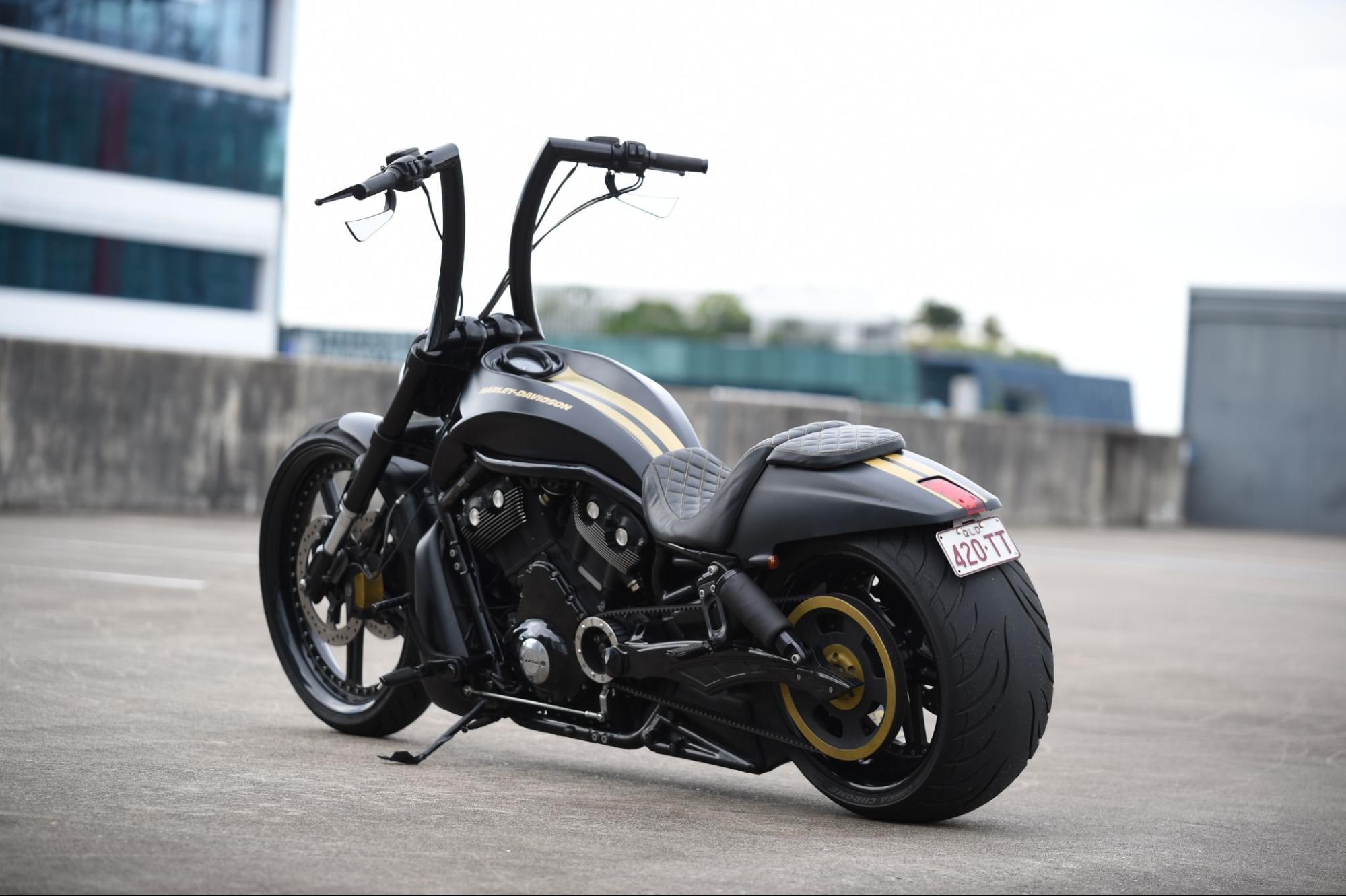Your motorcycle’s suspension system keeps your wheels on the ground, keeps you stable while you do things like steer and stop, and protects your spine from shocks. Motorcycle suspensions use a spring and damper combination to protect you from forces like cornering, acceleration and deceleration, as well as all the potholes, bumps and other surprises the road can bring.
Motorcycle suspension setup and tuning is an area of motorcycle maintenance with its own unique lingo, packed with terms like sag, damping and spring rates. A suspension system is made up of several different parts. The front forks and rear shock absorbers bear the brunt of what the road throws at you, while the springs determine the height of your ride and how your bike responds to twists and turns, acceleration and braking. The damping system consists of shock absorbers that keep the springs under control.
While new motorcycles come with suspension settings already in place that are designed with the average rider in mind, tuning your motorcycle suspension to suit your needs will make for a better, more comfortable riding experience. It’s also fairly easy to do with some tools and the right instructions.
Why Adjust Your Motorcycle Suspension?

First things first, why should you bother tuning your motorcycle suspension when it’s easier just to leave it the way it is? Here are some of the main reasons why you won’t regret adjusting the motorcycle suspension to suit your body and your style:
How the motorbike handles
While all new motorbikes come with predetermined suspension settings, manufacturers know that not every rider has the same height, weight or riding style. Tuning the motorcycle suspension to suit your size and shape – not the previous owner’s or some hypothetical rider’s – enhances all those useful factors like stability, traction and cornering ability.
Easier on your body
While exhilarating, riding a motorcycle can be a tiring experience, especially when the road is rough or bumpy. Tuning your motorcycle’s suspension makes for a more comfortable experience and can even increase the amount of time you can ride without needing a break.
Prevents wheelspin
During acceleration, the power of a motorcycle can cause its suspension to bottom out. Springs that are too stiff make for suspension that can’t move, which then causes the rear wheel to spin out. Adjusting your suspension keeps the weight evenly distributed and reduces the movement of the chassis, keeping you in control.
Luckily, the motorbike suspension setup is a pretty easy process. Once you learn how to adjust your motorbike suspension, you’re sure to notice the difference.
Suspension Setup Steps

Here’s our step-by-step guide to how to adjust the suspension on your motorbike.
Set the sag
The sag is the degree that the suspension compresses from the fully extended position. There are two kinds of sag: how much your suspension curves downward with you on it and how much it compresses under its own weight (also called rider sag). It’s best to have 40mm of rider sag for bikes with 120mm of front suspension.
You can calculate your suspension sag using just a tape measure, your riding gear and some help from a friend. With the front wheel off the ground, measure the fully extended suspension. Measure the exposed portion of the front fork legs and mark the number as L1. Then push down on the front of the bike, let it rise back up, measure the number again and mark it L2. Finally, lift the front of the bike and let it settle again, measure the fork, and mark it as L3. To calculate the sag, add numbers L2 and L3 together, subtract from L1 and divide by two.
Since calculating the sag requires two measurements, including one with you in full riding gear, it’s vital to get somebody else to help with this part of tuning the motorcycle suspension.
Adjust the front preload
To get the right sag figure, you might have to adjust the preload. Turn the adjusters on the front forks equally on either side.
Adjust the front compression
Your compression damping has an impact on how the bike performs under conditions like braking or going over bumps. Reduce it for more movement and a better quality of ride but increase it if you feel the front of your bike drop too quickly.
Adjust the front rebound
This part of the bike controls how quickly the fork goes back into place after compression. You can try testing if you need more rebound by bouncing the front end. You could use more rebound if the forks don’t settle back into place straight away.
Set the sag on the rear shock
It’s best to adjust the preload on this part of the bike to have about 30-35mm of sag.
Adjust the rear rebound
The adjuster for this part is located at the bottom of the shock and controls the speed at which it extends after compression. Turning down the rebound damping can help if your bike feels rough going over bumps.
Adjust the compression
Not every bike has shocks that come with compression adjustments. But for those that do, the starting point is to find the centre by counting clicks and then going for a test ride to see if you need to move the compression up or down.
Adjust the ride height
Adjusting the ride height is the final piece of the puzzle and has a major influence on the handling, steering and comfort. Both lowering and raising the rear have their benefits. There’s a bit of a trade-off between stability and sharp steering, and a lot of it is personal preference based on the kind of riding you do and in which environments.
If learning how to adjust your motorcycle suspension feels like a lot of work, and you’re not fond of measurements, there’s an easier option: taking your bike to a professional.
Reasons It May Need To Be Readjusted

Just when you’ve got the suspension perfect, unexpected events can come along that can wreck your motorcycle’s handling. Some of the major reasons you may need to retune your motorcycle’s suspension include:
Changes in average passenger weight or load
If you lose or gain weight or start carrying a passenger or additional baggage around regularly, that often means it’s time for a new motorbike suspension setup.
A new riding environment
If you move from the city to the country or vice versa, this makes for a new riding environment that you may have to adjust to.
Worn-out components
Like everything else, your suspension system consists of parts that wear out or fall apart in time. When these parts need to be replaced, another motorcycle suspension tuning is likely to be in order.
Servicing and maintenance
After having your bike serviced or fixed, tuning the motorcycle suspension to your preferences again is often necessary.
If you need help with your motorbike suspension setup, Taverner Motorsports is always happy to lend a hand.
Professional Help at Taverner Motorsports

The easiest way to tune your motorcycle suspension to your specifications is to take it to the Taverner Motorsports workshop.
The Taverner team repair, service, modify and customise any make and model of motorcycle, as well as stock a huge variety of parts. With more than 40 years in the motorcycle industry, we’ve seen and worked on just about every kind of motorbike under the sun. Whether you’re shopping for a new motorbike, have already bought one or are having one custom-made, we’ll make sure the suspension serves you and maximises your safety and enjoyment.
Ready to sort your suspension out and enjoy the benefits? Taverner is happy to provide you with a free quote for any of our services. Contact the Taverner team to find out more.
